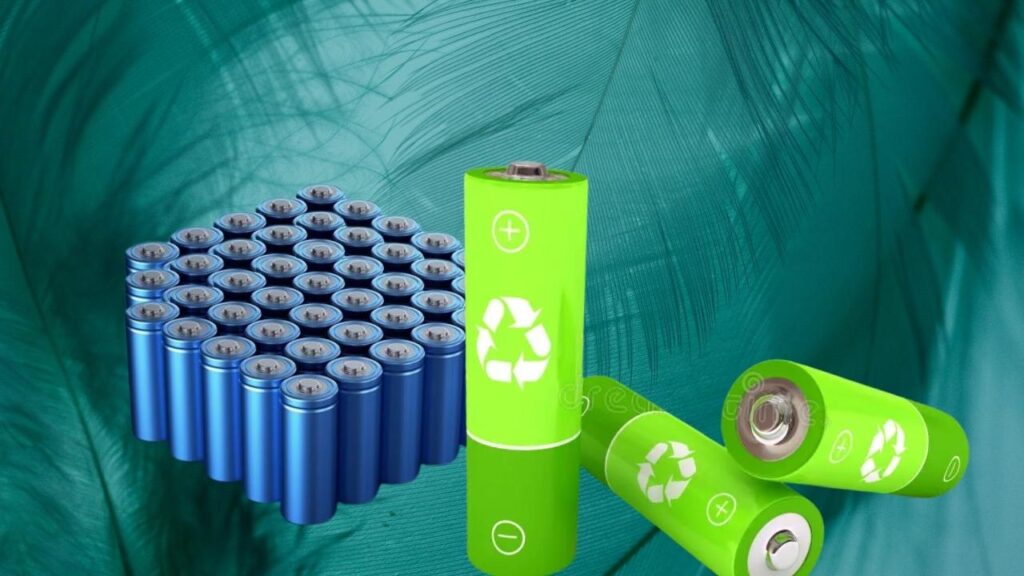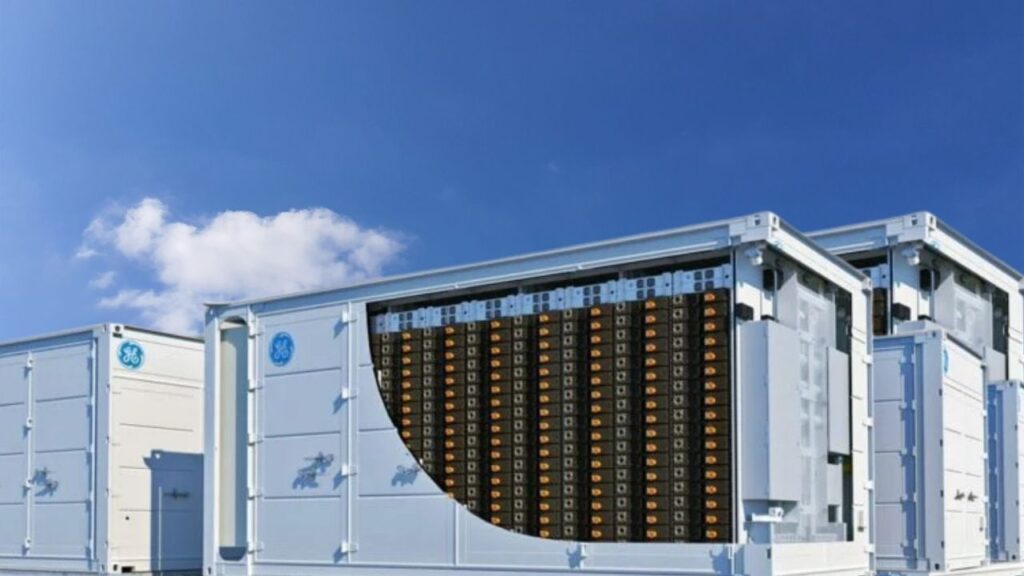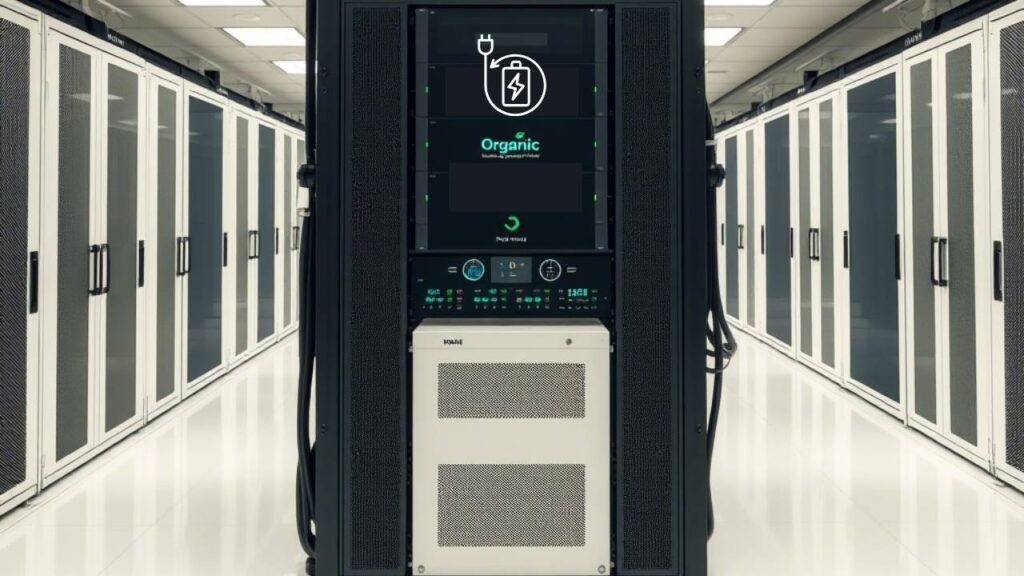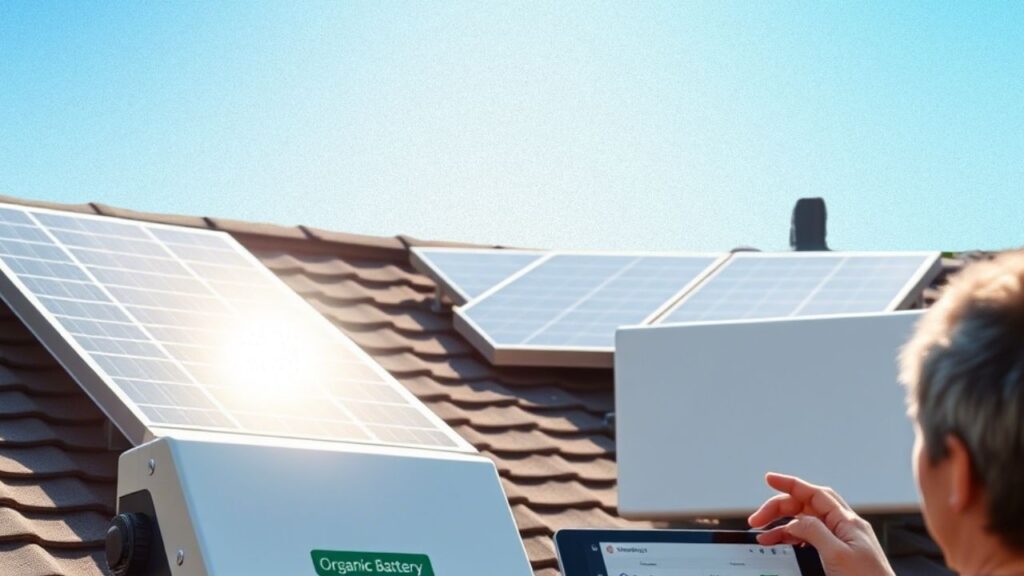New Organic Batteries Could Be the Key to Cleaner, Cheaper Energy Storage: In a world racing to adopt renewable energy, one major obstacle remains: reliable and affordable energy storage. While solar panels and wind turbines have become more efficient and accessible, storing that energy for cloudy days and calm winds is still a massive challenge. That’s where a promising new innovation steps in — organic batteries.

New organic batteries could be the key to cleaner, cheaper energy storage, offering an eco-friendly alternative to traditional lithium-ion systems. Scientists, universities, and green tech startups are working together to develop these carbon-based batteries that are not only safer and more sustainable but also potentially more affordable and scalable. This development could significantly reduce our reliance on rare earth materials and revolutionize the way we store clean energy.
Table of Contents
New Organic Batteries Could Be the Key to Cleaner, Cheaper Energy Storage
| Feature | Details |
|---|---|
| What are Organic Batteries? | Batteries made using carbon-based (organic) materials instead of heavy metals. |
| Key Advantages | Cheaper, non-toxic, environmentally friendly, and scalable. |
| Recent Innovations | Aqueous Organic Flow Batteries (AOFBs) with 5,000+ cycles and XL Batteries’ low-cost flow systems. |
| Target Applications | Grid-scale energy storage, off-grid power systems, residential storage. |
| Major Players | Harvard University, ANSTO, XL Batteries, Northwestern University. |
| Official Source | Australian Nuclear Science and Technology Organisation (ANSTO) |
New organic batteries could be the key to cleaner, cheaper energy storage, ushering in a new era of sustainable energy solutions. Their potential for lower cost, longer lifespan, and greater environmental safety positions them as a compelling alternative to lithium-ion systems.
While the transition won’t happen overnight, the signs are promising. As more governments, companies, and homeowners prioritize clean energy, organic batteries will likely become a staple in tomorrow’s energy infrastructure.
If you’re interested in the future of energy — whether as a consumer, investor, or innovator — keep your eye on this space. The age of organic energy storage is just beginning.
What Are Organic Batteries?
Organic batteries are a cutting-edge class of energy storage devices that replace conventional metal-based components like lithium and cobalt with organic molecules — substances made primarily from elements such as carbon, hydrogen, oxygen, and nitrogen. These materials are common in nature and can be synthetically modified to store and release electrical energy.
Think of them as the plant-based version of batteries. Instead of relying on rare earth elements or energy-intensive mining, organic batteries use renewable and biodegradable materials, making them a cleaner and potentially less expensive solution.
These batteries come in several forms:
- All-organic proton batteries: These use water-based electrolytes and organic electrodes, offering safety and sustainability.
- Organic redox flow batteries (OFBs): They store energy in tanks filled with liquid organic molecules, ideal for modular energy setups.
- Aqueous organic flow batteries (AOFBs): By combining organic compounds with water-based electrolytes, they deliver enhanced safety and scalability.
Why the Need for Better Energy Storage?
As the world moves toward net-zero carbon goals, energy storage has become the missing puzzle piece. Solar and wind energy are intermittent — meaning they don’t always produce power when demand is high. Energy storage allows us to balance that equation, capturing extra energy and releasing it when needed.
While lithium-ion batteries have dominated this space, they aren’t perfect:
- Environmental impact: Mining for cobalt and lithium damages ecosystems.
- High costs: The prices of rare metals fluctuate and are often linked to geopolitical issues.
- Safety hazards: Lithium-ion batteries can overheat, catch fire, or explode.
- Shorter lifespan: Most lithium batteries degrade after 1,000–3,000 cycles.
Organic batteries aim to overcome these hurdles. They offer longer life, safer materials, and the potential for easier recycling — all at a lower cost when mass production is achieved.
How Do Organic Batteries Work?
At the core of organic battery technology is the concept of redox reactions — where molecules gain or lose electrons to store and release energy. Instead of using metal-based materials, these batteries use organic compounds that can repeatedly undergo redox cycles.
Here’s a simplified breakdown:
- Electrodes: Constructed from redox-active organic molecules.
- Electrolyte: Usually water-based, enhancing safety and reducing flammability.
- Charge/Discharge Cycles: Electrons move from one electrode to another, storing or releasing energy just like in any other battery.
In organic flow batteries, these compounds are dissolved in liquid and stored in external tanks. The liquid flows through a central cell during operation. This approach makes the system extremely modular — you can increase energy capacity just by enlarging the tanks.
Real-World Data and Use Cases
It’s one thing to theorize about new tech, but how do organic batteries perform outside the lab?
Performance Highlights:
- Harvard University‘s AOFB retained 90% of its energy capacity after 5,000 cycles, which could equate to 10–15 years of use.
- XL Batteries, a U.S.-based startup, built an organic battery system for grid-level storage at projected 50% lower cost than lithium-based alternatives.
- Northwestern University researchers are repurposing industrial waste into high-performing organic battery components, advancing the circular economy.
These results suggest that organic batteries are moving from prototype to practical application, showing durability, safety, and cost-effectiveness.
Applications and Industries That Benefit
Organic batteries are especially valuable for large-scale, long-duration storage needs. Here’s where they make a big difference:
Grid Storage

Utilities can store renewable energy during low-demand periods and release it during high-demand times, reducing reliance on fossil fuel backups.
Off-Grid Systems

Ideal for rural areas, island communities, or developing countries lacking stable grid infrastructure.
Backup Power

Essential for hospitals, data centers, and emergency services, where uninterrupted power is critical.
Residential Solar

Homeowners with rooftop solar can store excess energy safely and avoid grid reliance, all without the fire risks associated with lithium-ion.
Are Organic Batteries Cheaper?
Short-term development costs are still high, but in the long run, organic batteries promise major savings. Here’s why:
- Raw materials are abundant and inexpensive.
- Manufacturing processes are simpler and less energy-intensive.
- Longer lifespan equals fewer replacements.
- Easier recycling reduces end-of-life costs.
According to industry reports, organic batteries could reach prices 50% lower per kilowatt-hour than lithium-ion once production scales up — a game changer for residential and commercial adoption.
Step-by-Step: How to Transition to Organic Battery Tech
If you’re an energy professional, homeowner, or policy planner, here’s how to adopt this breakthrough technology:
1. Assess Your Energy Needs
Understand your daily energy consumption and peak load requirements. Tools like smart meters or energy audits can help.
2. Check Compatibility
Ensure your solar inverter or hybrid system can support flow battery integration.
3. Choose a Reputable Supplier
Companies like XL Batteries, ESS Inc., and VoltStorage are pioneering in this space. Compare offerings based on scalability, warranties, and support.
4. Seek Professional Consultation
Work with energy consultants to design a custom system optimized for your environment and usage.
5. Monitor and Optimize
Use apps and dashboards to track performance, optimize storage schedules, and calculate savings over time.
Top 5 University Labs Leading the Future of Smart Materials in 2025
Photonics in Space: How NASA Is Using Laser Communication to Boost Deep-Space Data Transfer
Startup Uses Organic Electronics to Build Biodegradable Smart Sensors
FAQs About New Organic Batteries Could Be the Key to Cleaner, Cheaper Energy Storage
Are organic batteries available for home use today?
Not yet mainstream, but pilot programs are underway. Widespread residential availability is expected within 2 to 5 years.
How safe are organic batteries compared to lithium-ion?
Much safer. They use non-toxic, water-based electrolytes and are non-flammable, reducing fire risk.
Do they last longer?
Yes. Top-tier organic batteries have achieved 10,000+ charge cycles, which could mean decades of use in some applications.
Are they fully biodegradable?
Partially. While many components are biodegradable, further innovation is needed to make them fully compostable.
Can they be recycled?
Yes. They avoid rare metals, making them simpler and cheaper to recycle compared to traditional batteries.



















